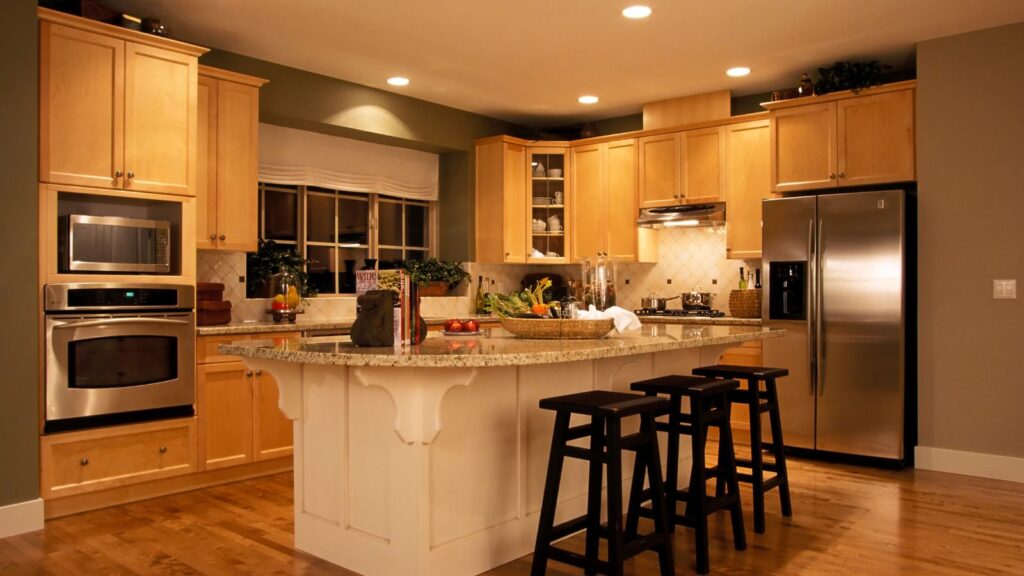
From pre-dawn coffee conversations to spontaneous dinner gatherings, it’s where everyone gravitates. And behind this phenomenon lies a largely ignored design factor: seating. The right bar stools & counter stools not only finish off a kitchen’s aesthetic but also determine how the room feels and functions.
Thoughtfully positioned stools in an island or counter facilitate conversation, coziness, and bonding. They dissolve the boundary between meal preparation and socialization, providing a relaxed and loose method for individuals to remain in touch. That is why brands such as Serena & Lily are concerned with aesthetics, but also design pieces that enhance both form and experience.
Why the Kitchen Has Become the New Living Room
In today’s homes, the kitchen isn’t tucked away behind closed doors. It’s open, airy, and often the centrepiece of everyday life. It’s where family members gather without planning to, and where casual moments feel as important as formal ones.
But what transforms this utilitarian space into a social hub? Comfort and accessibility.
Stools arranged around an island or countertop encourage people to linger. Bar stools & counter stools avoid the formality of traditional dining chairs. They provide natural stopping points. It’s where a glass of wine is had while preparing dinner, a quick breakfast before school, or a lazy Saturday afternoon with friends.
Designing Stools for Conversation
Choosing the right seating is not merely about colour or finish; it’s designing in a manner whereby humans engage with their environment. For example, backless stools can give a clean silhouette, but if comfort is a prime concern, choosing padded or high-backed models can be a lifesaver.
Think about the flow of your kitchen traffic. Are stools placed in a location where they won’t get in the way of foot traffic? Do they provide enough legroom under the counter? If you get the proportions right, your seating is convenient to use — that’s what encourages folks to stay a bit longer.
Style That Speaks Without Saying a Word
Your kitchen says a lot about your design personality, even if you don’t. And seating is part of that conversation. If your room is coastal, modern, or farmhouse-chic, your bar stools & counter stools must echo that conversation.
Brands like Serena & Lily are known for their ability to pair function with a visual story. A rattan chair woven in a textile might conjure sun-kissed, beachy mornings. A sculptural, graphic frame might communicate something about enjoying the beauty of restrained design. These choices aren’t simply aesthetic — they determine how people feel in your home.
A Bar Seat is An Invitation of Welcome
There’s something symbolic about pulling up a stool. It tells your guest, “Stay awhile.” When sitting is intentional, it sets the tone for connection. If you’ve ever uncomfortably stood in a kitchen with nowhere to sit, you understand how annoying that is. On the other hand, when someone slides into a seat and can put their elbows somewhere, the interaction occurs organically. You find yourself telling stories without realizing it. That’s the miracle of the right seating: it gets people comfortable.
Selecting the Correct Height and Location Is More Important Than You Realize
One of the most frequent errors in choosing bar stools & counter stools is forgetting the significance of height and space. A stool that’s too tall makes it uncomfortable to sit, and one that’s too low may feel more like a perch than a place to sit. The distinction between a bar stool and a counter stool generally hinges on a few important inches, but those inches have a big effect on comfort.
As a general guideline, leave at least 10 to 12 inches between the seat top and the underside of the countertop. This will allow individuals to sit comfortably without the feeling of confinement. Consider spacing between stools as well — leave about 6 inches between each stool so your guests aren’t bumping elbows during meals or conversation.
More Than Furniture — It’s an Invitation
When carefully chosen, bar and counter stools are more than utilitarian pieces. They’re subtle hosts in the space, encouraging individuals to stop, connect, and savor the moment. They transform your kitchen into a versatile space—a space that transforms family dinners, impromptu conversations, or individual cups of tea on a rainy morning. By considering how seating affects flow, comfort, and mood, you’re not just designing a kitchen; you’re shaping an experience.












